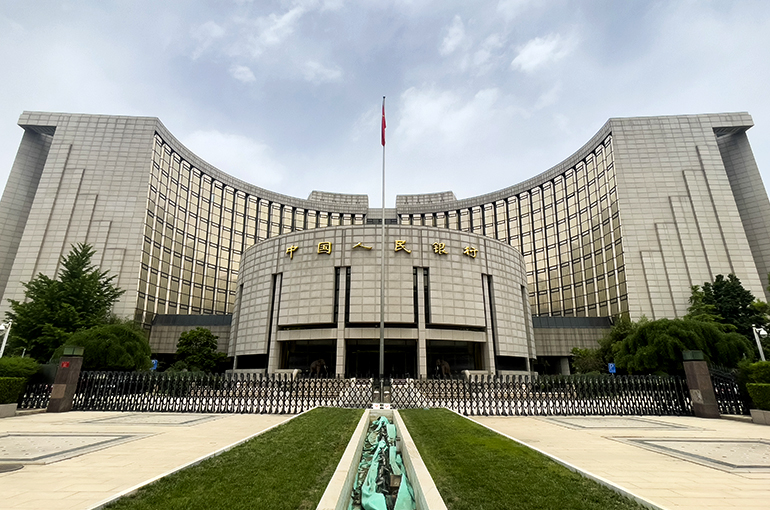 PBOC to Roll Out More Policies to Boost Liquidity, Official Says as Key Economic Gauges Dip in August
PBOC to Roll Out More Policies to Boost Liquidity, Official Says as Key Economic Gauges Dip in August(Yicai) Sept. 18 -- The People’s Bank of China will introduce additional measures to reduce financing costs for businesses and borrowing costs for individuals, along with other initiatives, while maintaining ample liquidity, a central bank official said after the country’s main economic indicators slowed in August.
Monetary policy will become more flexible, moderate, precise and effective, a PBOC official said. The central bank will increase the intensity of regulation, accelerate the implementation of financial polices and introduce new measures to further reduce financing costs for enterprises and credit costs for residents, while maintaining reasonable and sufficient liquidity.
This is a rare instance of the central bank interpreting monthly data, according to a fixed income research report recently released by Huatai Securities. It shows that the PBOC is aiming to prevent the market from overinterpreting the data and is conveying its stance on steady growth and stable expectations for monetary policy
New Chinese yuan-denominated loans slumped by CNY460 billion to CNY900 billion (USD126.8 billion) in August from the same period last year, while social financing tumbled CNY98.1 billion (USD13.8 billion) to CNY3 trillion (USD426.9 billion), according to PBOC data released on Sept. 13.
M1, a narrow measure of money supply that covers circulating cash and non-bank and non-government deposits, slumped 7.3 percent in August from the year before to CNY63 trillion (USD8.8 trillion). It marks the fifth straight month of declines, and is now at a historic low.
But M2, a broad gauge that covers cash in circulation and all deposits, expanded by 6.3 percent, the same rate as the previous month.
The country is currently in a period of transition between old and new growth drivers and structural adjustments are deepening, said Li Qilin, director of the Hongta Securities Research Institute. The credit expansion in emerging industries cannot fully offset the credit tightening faced by the real estate sector and the limited credit expansion by urban investment platforms.
Regulatory measures reining in high-interest fundraising and other areas of excess have also contributed to the slowdown in credit growth this year, Li said. People are also cautious about spending, due to concerns about employment and future income prospects, which has led to a drop in the issuance of personal loans by banks.
But borrowing increased. In August, the amount of yuan-denominated loans jumped CNY640 billion (USD90.1 million) from July, and new social financing expanded by a notable CNY2.2 trillion (USD310 billion).
As previously implemented supportive macro policies take effect and as more new measures are rolled out, social financing and M2 money will start to steadily rebound, said Zhang Xu, chief fixed income analyst at Everbright Securities.
Anticipated Cuts
Market analysts believe that the central bank may support expanding domestic demand and promoting moderate price increases through measures such as lowering the reserve requirement ratio and interest rates.
The PBOC official’s statement indicates that a RRR cut is highly likely, while an interest rate cut may depend on the economic data from August to September and the actions of the US’ Federal Reserve, Huatai said.
The RRR could be lowered further at a suitable time depending on how the economy and capital markets perform, as well as macroeconomic policy orientation, Zhang said. Later this month, the medium-term lending facility rate could be lowered again to help reduce funding costs for the banking system.
There is also growing anticipation in the market of more mortgage rate cuts. A second round of reductions in existing mortgage rates will be key to boosting market confidence in the real estate sector, said Wang Qing, chief macro analyst at Golden Credit Rating International.
Another round of mortgage interest rate cuts may not be very significant, said Dong Ximiao, chief researcher at Merchants Union Consumer Finance. Concentrated reductions in mortgage rates should be special policies adopted during exceptional periods and they should not become a routine. Otherwise, it will have a big impact on the operations of banks.
Editor: Kim Taylor